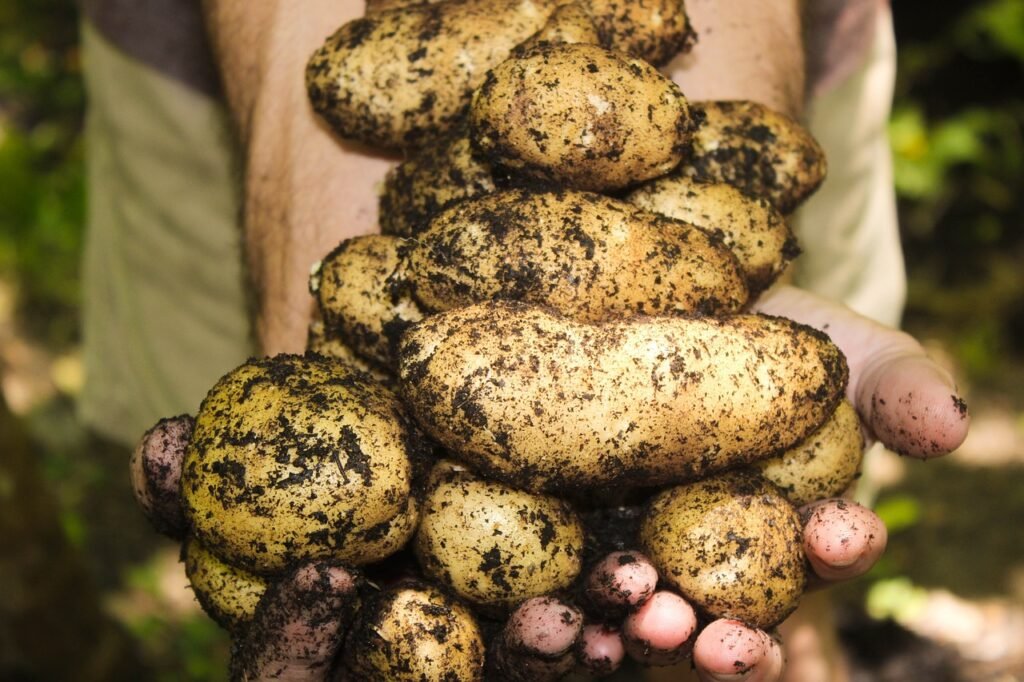
Intro
Potatoes are a staple in many households around the world, known for their versatility, nutritional value, and delicious taste. However, one of the common challenges faced by potato lovers and gardeners alike is how to keep these tubers fresh for extended periods. Whether you’ve just harvested a bumper crop from your garden or taken advantage of a sale at the grocery store, mastering potato storage is essential. With the right techniques for preserving potatoes, it’s entirely possible to enjoy your spuds fresh all year round. In this guide, we’ll delve into everything you need to know about potato storage, ensuring your potatoes remain in perfect condition month after month.
Understanding the Basics of Potato Storage
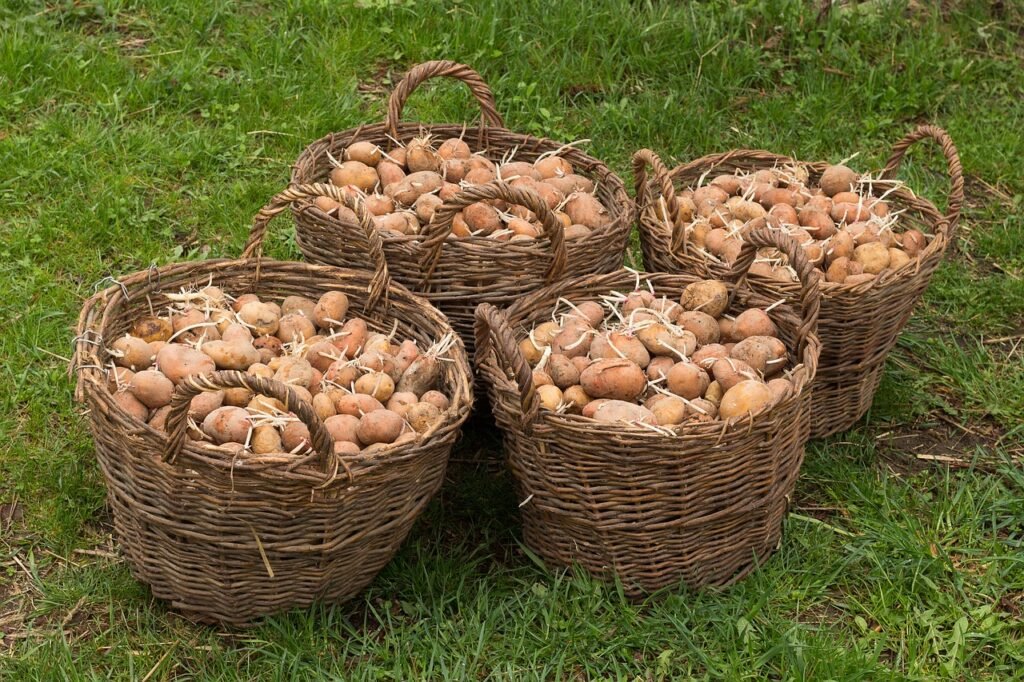
To effectively prolong the shelf life of potatoes, it’s crucial to appreciate the core principles of their storage. At their essence, potatoes are not inert; they continue to respire and engage in physiological activities post-harvest. This ongoing metabolism can influence their freshness and edibility over time. Central to optimal potato storage is the management of environmental conditions to decelerate these natural processes. Temperature, humidity, and light exposure are the pivotal factors that, when controlled correctly, can substantially enhance the longevity of potatoes.
A fundamental aspect involves maintaining an environment that supports this slowed metabolism without completely arresting it. Ideal storage seeks to minimize the sprouting and rotting that can occur under less than optimal conditions. Specifically, temperatures that are too warm can accelerate sprouting and spoilage, while too much light exposure leads to greening and the production of solanine, a toxic compound. Conversely, conditions that are overly cold can trigger the conversion of starches into sugars, adversely affecting the potato’s texture and taste.
Moreover, understanding that potatoes emit moisture and gases as part of their respiration process highlights the importance of ventilation in storage settings. Adequate air flow is necessary to dissipate these emissions, reducing the risk of mold growth and other moisture-related issues. By applying these foundational insights into the environmental requirements of potato storage, it becomes possible to significantly prolong their usable life, ensuring a supply of fresh potatoes ready for use across the seasons.
Selecting Potatoes for Long-Term Storage
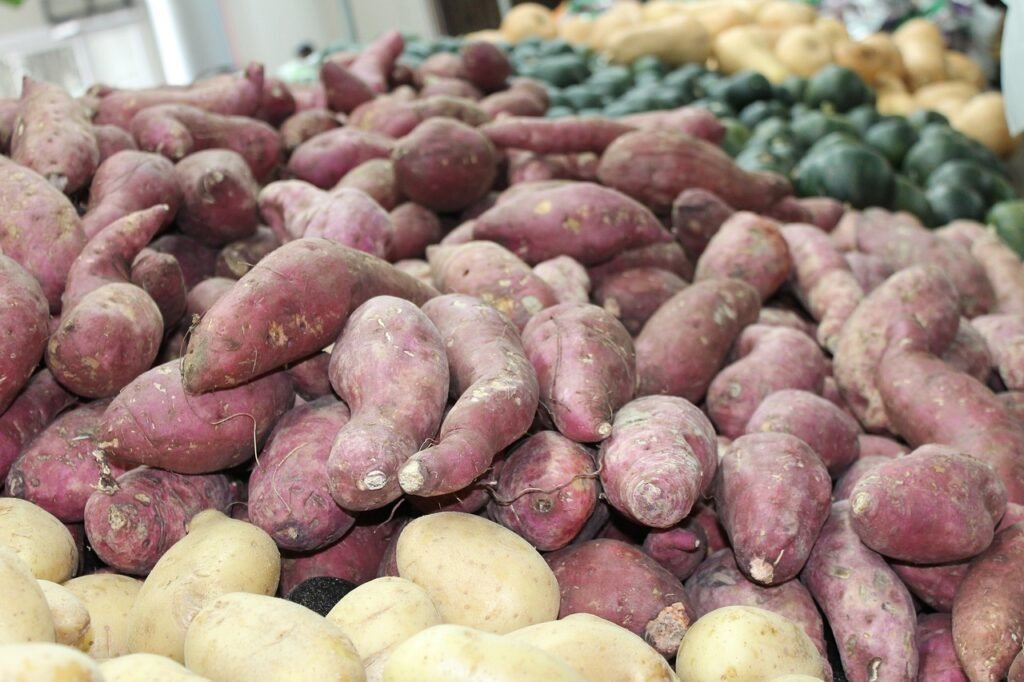
Choosing the right potatoes for long-term storage is a critical first step in ensuring your spuds survive the storage period. Mature, robust potatoes without any signs of disease are the prime candidates for extended keeping. Focus on picking tubers that feel firm to the touch and are free from any physical imperfections such as cuts, bruises, or soft spots. These flaws can accelerate spoilage and potentially affect the entire storage batch.
It’s also advisable to be selective about the potato varieties you plan to store. Some types are inherently better suited for long-term storage than others. For example, starchy potatoes like Russets and certain all-purpose varieties like Yukon Golds are known for their excellent keeping qualities, thanks to their dense flesh and thicker skins. These varieties tend to last longer and maintain their quality over time compared to others.
Another consideration is the condition of the potato skin. Ideally, you want potatoes with intact, undamaged skin. The skin acts as a natural barrier against environmental factors that could lead to decay. Any breaches in this barrier, no matter how small, can become entry points for bacteria and fungi, significantly shortening a potato’s storage life.
Finally, while it may be tempting to choose the largest potatoes for storage, size is not necessarily indicative of storage potential. Medium-sized potatoes often store better than very large ones, as they have a reduced surface area relative to volume, which can help in maintaining moisture levels and overall integrity during storage. By adhering to these guidelines, you can select the best potatoes for longevity, setting the stage for successful long-term storage.
The Importance of Curing Your Potatoes
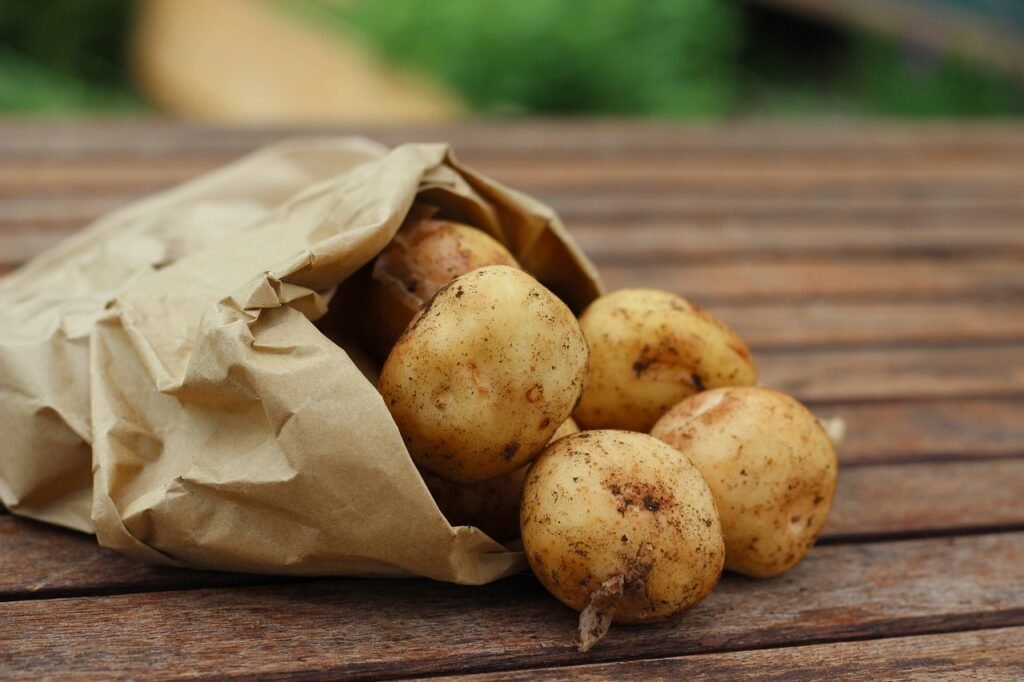
Curing is a preparatory step not to be overlooked if you aim for long-lasting potato storage. This process initiates right after harvest, setting the stage for a successful preservation journey. During curing, potatoes are allowed to rest in conditions that promote the thickening of their skin. This is achieved by placing them in a well-ventilated, dark space where the temperature hovers between 50-60°F (10-15°C). The duration of this crucial phase spans approximately two weeks. The significance of curing extends beyond merely toughening the potato’s outer layer; it plays a pivotal role in healing minor abrasions or wounds the tubers might have incurred during harvest. This natural healing process is vital as it reduces the chances of microbial invasion that could lead to decay during storage.
Additionally, curing enhances the flavor profile of the potatoes, contributing to a more satisfying culinary experience down the line. Throughout this period, it’s important to resist the urge to wash the potatoes. Introducing moisture at this stage can counteract the benefits of curing, inviting unwanted decay. Instead, any remaining soil should be gently brushed off once the curing process is complete. This careful handling ensures the potatoes are primed for storage, having developed a resilient barrier against the environmental challenges they will face while stored. Engaging in this preparatory step is a testament to the meticulous care required to extend the shelf life of potatoes, laying a foundational stone for their preservation.
Ideal Conditions for Storing Your Potatoes

To ensure the longevity of your potatoes, pinpointing the perfect storage environment is crucial. Aim for a spot that’s consistently cool and devoid of light, with the thermometer ideally parked between 45-50°F (7-10°C). Such conditions are commonly found in areas like basements, cellars, or insulated parts of a garage. The goal is to mimic the natural underground habitat where potatoes thrive best, away from the detrimental effects of sunlight and warmth that can trigger spoilage and sprouting.
Equally important to temperature control is the regulation of humidity. A relative humidity level of 85-90% strikes the perfect balance, providing enough moisture in the air to keep the potatoes from shrivelling without tipping into excess that could foster mold and decay. Striking this balance might require the use of a humidifier or dehumidifier, depending on the natural conditions of your chosen storage area.
Shielding your potatoes from light is another non-negotiable factor. Prolonged exposure to light not only turns potatoes green—a sign of the development of solanine, a harmful compound—but it also can degrade the quality of the potato over time. Utilizing opaque storage containers or simply keeping the storage area dark can effectively prevent this issue.
Lastly, good ventilation is a cornerstone of successful potato storage. A well-ventilated area helps to dissipate the natural gases released by potatoes, reducing moisture buildup and the risk of mold. Whether through natural airflow or assisted ventilation, ensuring that your storage space has adequate air movement will contribute significantly to maintaining the freshness and edibility of your potatoes.
Tips for Preventing Spoilage and Sprouting

To ward off spoilage and deter sprouting in your potato storage efforts, vigilant care and proactive measures are key. One of the most effective strategies involves conducting regular inspections of your stored potatoes. By doing so, you can identify and remove any tubers that show signs of spoilage, softness, or have begun to sprout. This early intervention helps to curb the spread of these issues to the healthy potatoes in your stash.
Another tactic to consider is the strategic placement of ethylene-producing fruits, such as apples, near your stored potatoes. Ethylene, a natural plant hormone, has been found to suppress sprout development in potatoes. This method can be particularly useful in extending the dormancy period of your potatoes, keeping them fresh and sprout-free for longer durations.
Additionally, choosing the right type of storage container can significantly impact the prevention of spoilage and sprouting. Opt for breathable options, like burlap sacks or wooden crates, which facilitate air circulation around the potatoes. This not only helps in maintaining an ideal moisture level but also aids in dispersing the gases that potatoes emit, further minimizing the risk of mold growth and sprouting.
Implementing these practical tips in your potato storage routine can make a substantial difference in maintaining the quality and longevity of your potatoes. By staying vigilant, utilizing natural sprout inhibitors, and selecting appropriate storage containers, you can effectively keep spoilage and sprouting at bay, ensuring your potatoes remain in prime condition for use.
Innovative Storage Methods for Modern Households
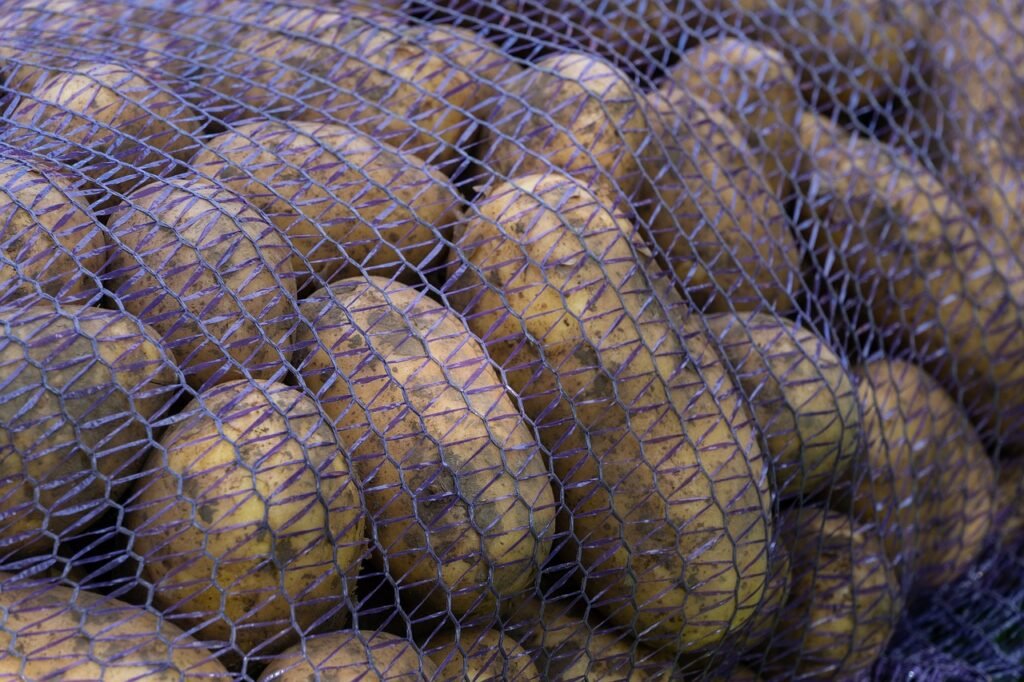
In today’s modern homes, not everyone has access to a cellar or basement ideal for storing potatoes. However, innovation and creativity can still ensure your potatoes stay fresh without traditional storage spaces. One approach is leveraging your refrigerator, but with a twist. Place potatoes in a perforated plastic bag or a breathable paper bag; this modification allows the potatoes to stay cool while ensuring the airflow they need to prevent spoilage. Adjust your refrigerator’s temperature to be as close as possible to the ideal potato storage temperature, avoiding the coldest settings to prevent sugar conversion.
For those seeking a tech-savvy solution, consider investing in a climate-controlled storage unit designed specifically for vegetables. These units are engineered to maintain the precise humidity and temperature potatoes need, mimicking the conditions of a root cellar.
Another option for small quantities is the use of vacuum-sealed bags. This method can extend the freshness of potatoes by removing air and significantly slowing down the respiration process. However, it’s crucial to refrigerate these vacuum-sealed potatoes to keep them at a stable, cool temperature.
Finally, for a DIY approach, convert a portion of your garage or utility room into a potato storage area. Install a small fan for adequate ventilation and use insulating materials to keep the temperature steady. These innovative methods cater to the spatial and environmental challenges of modern homes. This ensures that anyone can successfully store their potatoes long-term, regardless of their living situation.


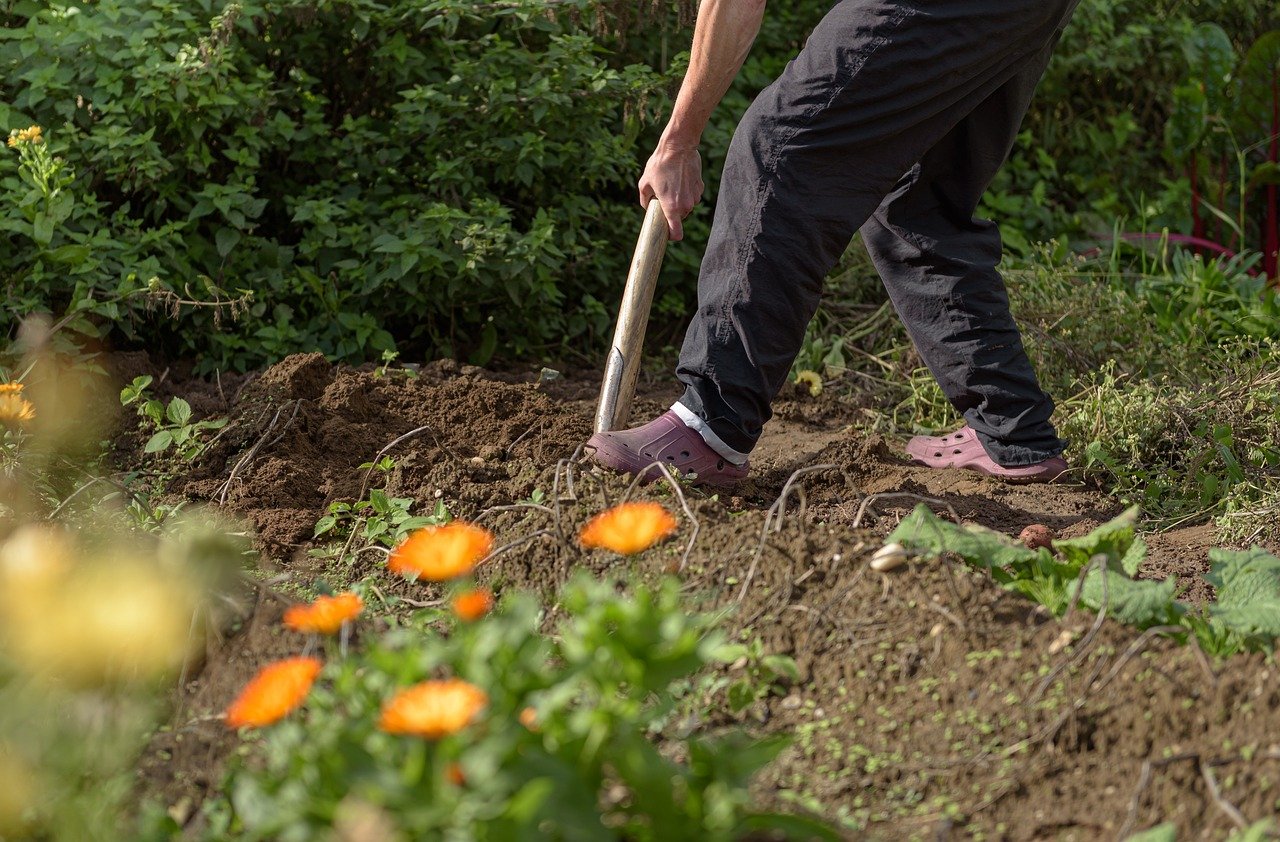
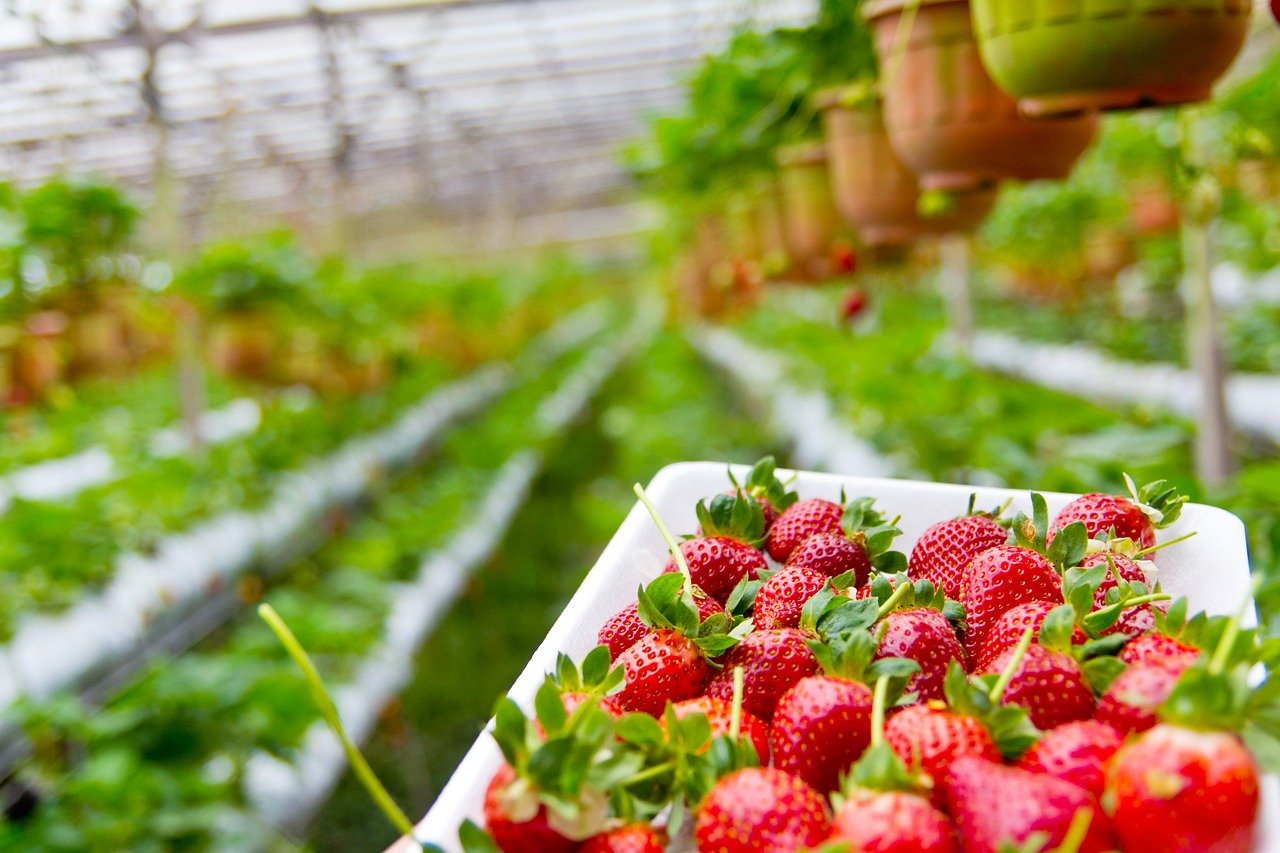

I am really impressed with your writing talents and also with the format on your blog. Is this a paid theme or did you modify it your self? Either way stay up the nice high quality writing, it’s uncommon to look a great blog like this one today!